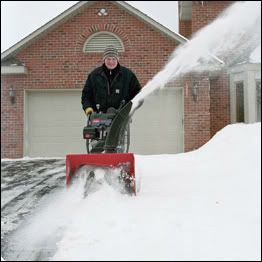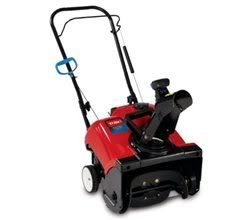Arco Lawn Equipment
The official blog of Arco Lawn Equipment in Ballwin, MO; providing tips, ideas, and insider knowledge on lawn equipment, lawn equipment maintenance, lawn equipment reviews, lawn care, and landscaping.
Monday, November 12, 2012
Small Business Saturday
Shop Small®
Between Black Friday and Cyber Monday is another day, one dedicated to the businesses that boost the economy and invigorate neighborhoods across the country.
It’s Small Business Saturday®, and this year, it’s happening on November 24.
Shop Small this November 24TH, and let’s make this the biggest day of the year for small business.
To learn more, visit ShopSmall.com or IndependentWeStand.org.
Friday, July 6, 2012
Beat the Heat With Your Lawn
Bill and Jeff have established what they call "The Plan" to help your lawn reach it fullest potential all year round. Their newsletters outline what plans are best for your lawn on a weather specific basis. Their advice is based on our climate here in the St. Louis region and their advice caters to what type of grass you have growing in your "sward". If you follow their plan to the letter your lawn will look like the outfield at Busch Stadium in no time.
The Turf Guys recommend watering your grass early in the morning in what they call a "dew wash" (watering every part of your grass for two minutes to clean the dew off before you water). Dew spreads a fungal mycelium that helps spread disease on your lawn. Below is a picture of what the fungus can do to your lawn.
Thursday, May 24, 2012
Is it always greener?
Tuesday, November 22, 2011

Snow is coming!!
Look to the city for the upcoming snow news. This from the latest in St. Louis snow news:
JEFFERSON CITY, Mo. (AP) -- Missouri transportation officials are getting ready for winter.
The state Transportation Department says crews are repairing equipment, building up supplies and testing their procedures for handling winter emergencies. From (KMOV)
If the city is ramping up for snow already shouldn’t we be as well? Snow might be a "maybe" here in STL, but it has already hit the North East with full force! See the article from The Daily Beast,
With snow coming in full swing, snow blowers are FLYING off of the shelves. Toro distribution center has already SOLD OUT of more than half of its models that were made for the year and will not be making anymore. If you are interested in a good snow removal machine, check out the Power Clear 418.
Do you already have your snow removal equipment, but it may need a bit of tune up? There are many ways to address your machine to get it in tip top shape. Here is a short list of things to check:
* Having trouble with your snow blower removing snow without tilting the machine up slightly? Check your scraper bar on the bottom of the machine to ensure that it is not worn out. Also, the rubber paddles on the single stage snow blower wear out and may need replacing.
* Having trouble starting your machine after it has sat all year long? Check to see if you have old fuel in the machine from last year. If so, you may need to drain the old fuel and start with fresh. If this does not work it is possible that the carburetor in the machine may have a buildup of varnish or that your carburetor inlet seat is damaged from sitting. Either way, a fuel system repair may be inevitable. If this is the case, purchase a carburetor repair kit, or take it in to your local dealer and they can get it up and running for you.
Looking for an easy way to eliminate ice on the walkways? We suggest using an Ice melt product rather than just a sodium chloride. Something with a tri-mix is preferable in order to do the best job with the least amount of lawn damage or tracking into the house. ICE MELT or STORMBUSTER are two great products for this, which can be purchased now at Arco Lawn Equipment.
As always, thanks for reading and if you need to purchase snow blower parts check out this great listing on Ebay for Toro kits! Other great values and parts available on our website.
Sunday, May 29, 2011
Small Engine Smarts: The Five Basic Systems, Part 2
 |
| Image by David Reber's Hammer Photography |
- Spark plug
- Spark plug wire
- Ignition armature
- Flywheel
- Flywheel magnets
- Oil reservoir
- Dipstick
- Oil dipper or paddle
- Oil filter
- Bypass valve
- Cooling fins
- Flywheel fins
- Blower housing
- Air guides
- Engine speed control
- Throttle lever
- Governor spring
- Speed control cable
- Throttle linkage
- Governor lever
- Governor cup
- Governor shaft
- Flyweights
- Camshaft
- Timing gear
Arco Lawn Equipment provides how-to articles, advice, and all information on this website for informational purposes only, and cannot be held liable for damage to self or equipment incurred. Please read your owner's manual, follow all safety instructions, wear proper safety apparel, and never allow children or pets to play in or around lawn equipment. Consult a professional small engine technician if you are unsure about any of the steps involved in power equipment maintenance, use, or repair.
Wednesday, May 25, 2011
Small Engine Smarts: Regular Maintenance Schedule
 |
| By James Lee |
- Change the oil and filter
- Check the oil
- Remove debris around the muffler
- Change the oil
- Service the air cleaner assembly
- Clean the fuel tank and line
- Clean the carburetor float bowl (if your machine is so equipped)
- Inspect the rewind (starter) rope for wear
- Clean the cooling fins on the engine block
- Remove debris from the blower housing
- Check engine compression
- Inspect governor springs and linkages
- Inspect ignition armature and wires
- Inspect the muffler
- Check the valve tappet clearances
- Replace the spark plug
- Adjust the carburetor
- Check the engine mounting nuts/bolts
- Clean the cooling system (clean more often if using under dusty conditions)
- Change the oil filter, if equipped
- Decarbonize the cylinder head
Saturday, May 21, 2011
Overview: Types of Grass
 |
| Fescue |
 |
| St. Augustine |
 |
| Zoysia |





